Part of the What is Your Purpose series
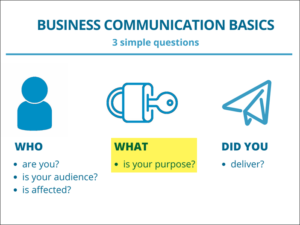
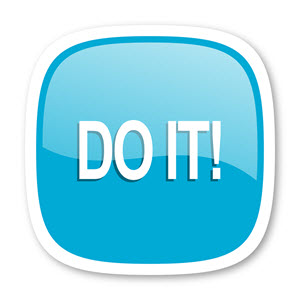 Do you hate to be told what to do? Yeah, me, too.
Do you hate to be told what to do? Yeah, me, too.
Maybe that’s why we fail to tell our business communication audience what to do. We don’t want to tick them off.
Or we assume our audience will know what to do.
In the What’s your purpose post, you received three simple questions to ask when planning your business communication. This post reviews the last question –
What do you want your audience to do?
Tell Your Audience What to Do
Think about the audience for your business communication.
- Are they colleagues?
- Customers? Clients?
- Or potential customers or clients?
When you communicate with them, you have a reason – a purpose – right? You want them to do something.
You may want to persuade, invite, or collaborate with your audience. That’s difficult to achieve if you assume your audience knows what you want them to do.
Too often, business communication lacks a simple, yet vital piece – the call to action. Click To TweetDo you forget to tell your audience what to do? I know I do. But I have gotten better. 😊
A Familiar Call to Action
Whenever I review my business for areas of improvement, I go back to my mantra.
Keep it simple, clear & uniquely yours.
I have yet to find an area where it does not apply. So, let’s look at how my mini mantra applies to telling your audience what to do.
Keep it simple
When I read the phrase, call to action, I imagine trumpets blaring. Don’t ask me why. It’s just the way my mind works. Fortunately, a good call to action does not require much fanfare.
For best results, keep your call to action simple.
- Want people to buy your product? Tell them – Get your 25% discount today
- Building business relationships? Help them learn more – Reserve your spot
- Generating more leads? Share something of interest – Get your free ebook
Short, action verbs keep it simple.
- Get/Grab/Snag
- Try/Test-drive
- Reserve
- Start/Begin
- Learn/Discover
But remember to give the reader a reason to follow that action verb.
- Why should they subscribe?
- And what are they subscribing to?
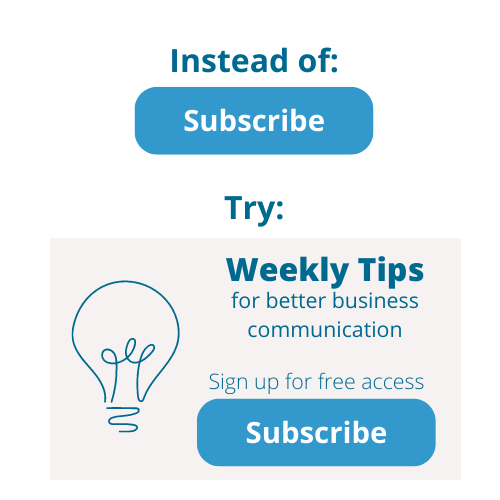
Keep it clear
You know less is more. It helps keep your message clear.
- Make your point – quickly.
- Format content for scanners.
- Highlight the important stuff (stuff is a highly technical marketing term).
If less is more, why are long copy sales pages still so effective? Be honest. Don’t you hate them? A lot of people do.
Like most business communication, using long copy depends on your audience.
For example, recently I needed to purchase a new coffee maker. If you view your morning cup of coffee as lifeblood to functioning, you understand the urgency. So, what factors did I look for?
- Availability – hey, lifeblood.
- Brand/model – checked out coffeemakers I had experience with
- Price – imagine my reaction when I saw what I purchased for $39.99 was now $114.99
While I had to do more digging than I intended, reading a long copy sales page had no appeal. What do I care about its BBB rating and its numerous awards for easy cleaning? So, short and sweet would do quite nicely, please.
On the other hand, when looking for a new desktop, more is welcome. Potential situations where long copy may be a better choice include the following.
- High-ticket items
- The customer’s need is more involved
- Or your product or service is complex
Regardless of which theory you subscribe to, clear business communication shares a common bond – great format and design.
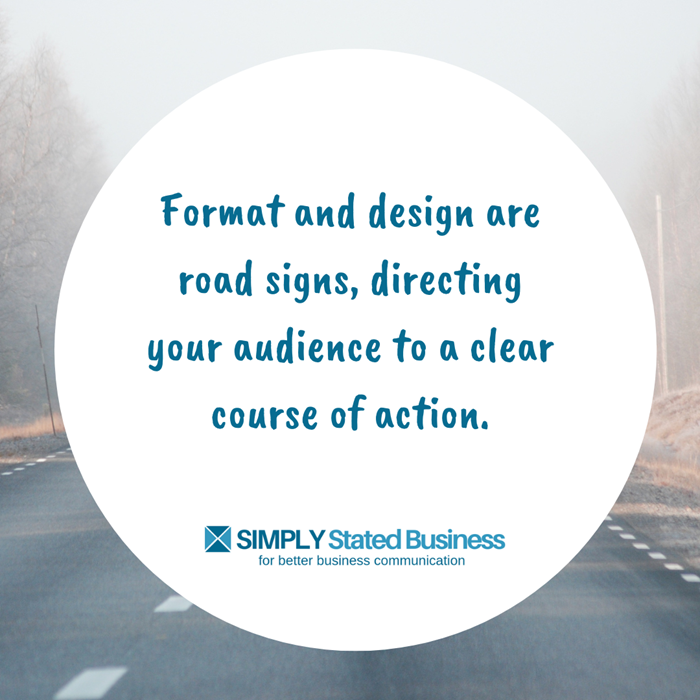
Keep it uniquely yours
You have style. It may not land you on the next Best Dressed list, but it is your style. And that makes you unique.
Your audience connects with unique. Templates, courses, and how-tos only work when you make them your own. If you feel you have seen it all before – you have.
Imagine how your audience feels.
So, play around with different Call-to-Action text and looks. Inject your unique personality.
Twitter introduced me to the fun sense of humor of Merriam-Webster. The following is part of its landing page after clicking on an ad.
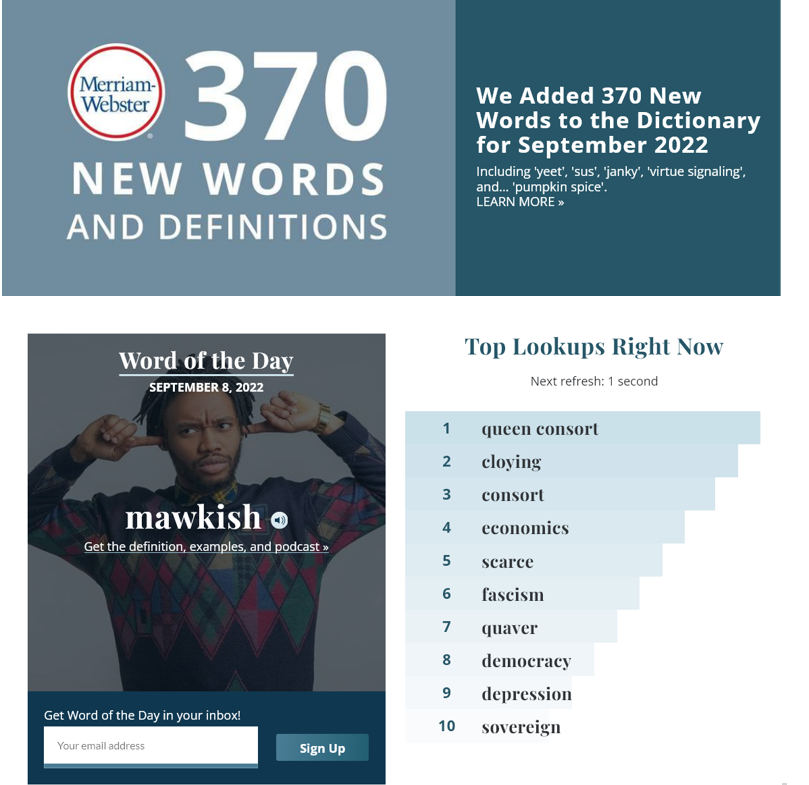
Even an organization that has been around since 1828 can show its fun side. 😊
Debates rage on about which button colors and size make a difference in the number of clicks. You decide what works best for your audience.
The following posts share opinions on various call to action strategy.
- Which Button Color Converts the Best?
- 8 Must-Have Characteristics of the High-Converting CTA Buttons and Examples
- 50 Call-to-Action Examples You Can’t Help But Click
Road-test your call to action. Sprinkle in what makes you unique.
- Does your writing sound like you? Or a rehash of someone else?
- Does your design strengthen your message? Or is it a template you’ve had forever?
Sometimes the simplest change produces the biggest rewards.
What Do You Want Your Audience to Do?
Know what you want your audience to do. Then help them do it.
- Keep it simple – don’t lose your message in the delivery.
- Keep it clear – stay focused on your message.
- Keep it uniquely yours – believe in your business. It shows.
What examples do you have for telling your audience what to do? Share your tips in Comments.
==================================
Note: The next posts recap what we have covered so far and offers tools for seeing if your business communication delivers the basic.
==================================
Note: This post originally published on May 31, 2016. This September 11, 2022 version updates it.
===================================

Love it! Of course, that may be related to the fact that I love telling folks what they need to do 🙂
But you do it so well, Roy. 😉 Thanks for stopping by and sharing.
Nice, Cathy. As usual.
Aw, shucks, thanks, Anne. 🙂
Hi Cathy. Thanks for sharing your post. It’s great advice. Your readers come to you to learn something. They want to know what to do in whatever area you are talking about, so it makes sense that at the end of your post you should tell them exactly what to do to solve their issue. If you make it clear exactly what you expect them to do then you have done all you can. It’s on them to follow through or not.
Thank you, Ben, for your insight. I forgot to do that on my blog for quite some time. I’m getting better at it. 😉